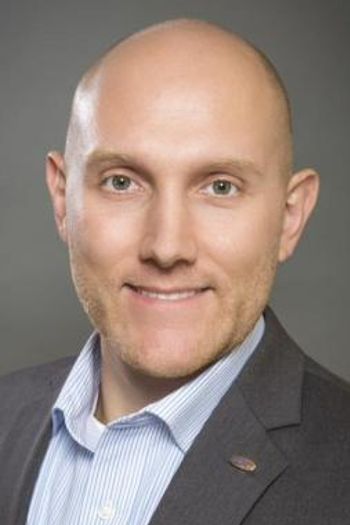
Young doctors are jumping ship to non-clinical roles
In his debut blog, Ryan Gamlin writes why he thinks the increasing proportion of doctors in medical school today do not intend to treat patients as their primary career-or at all.
Editor’s Note: Welcome to Medical Economics' blog section which features contributions from members of the medical community. These blogs are an opportunity for bloggers to engage with readers about a topic that is top of mind, whether it is practice management, experiences with patients, the industry, medicine in general, or healthcare reform. The series begins with this blog by Ryan Gamlin, a former health care management consultant and current medical student at the University of Cincinnati. The views expressed in these blogs are those of their respective contributors and do not represent the views of Medical Economics or UBM Medica.
Ryan GamlinToday finds us at an inflection point in medicine, and no, it’s not CRISPR, the opiate epidemic, nor the development of targeted biological therapies.
Rather, I find it fascinating that an increasing proportion of the roughly 100,000 doctors in medical school today do not intend to treat patients as their primary career – or at all.
The movement of doctors from patient care to non-clinical roles has caused no shortage of hand-wringing, from NPR’s December 2015 story, “
I suspect, however, that most physicians view those who leave clinical practice behind, either in whole or part, with some degree of envy. These “Drop Out Docs” (complete with a
The work just isn’t fun anymore
In a recent New York Times opinion piece, “
Popular this month: How to navigate the medical marijuana dilemma
In short, generations of doctors, demoralized by checklists and “process for the sake of process,” have lost touch with their motivations for patient care. It should come as no surprise, then, that many medical students and residents, upon seeing what practice beyond their training holds, cast their sights beyond clinical medicine.
The multiplier effect
For many young doctors, the appeal of a non-clinical job is the opportunity to touch more lives, and to make a bigger difference in healthcare than possible by treating one patient at a time.
The increasingly pervasive influence of technology in medicine means that with the right application or insight, one doctor can be in the pockets (or rather “in the smart phones”) of millions of people.
New programming languages mean that a medical student, resident, or practicing doctor can get a first iteration of a product to market in months, not years – and if it fails… they’re back to plan A, having taken a relatively short time away from their training or career.
Similarly, in the sphere of public service, few would argue that Vivek Murthy’s impact on the health and well being of the United States were greater as a full-time practicing internist than as Surgeon General.
Finally, many physicians’ belief that one can make a bigger difference by treating the system rather than patients is compounded by the growing incursion of mid-level providers, like nurse practitioners, in to areas of medical practice once available exclusively to medical doctors. “If my patient doesn’t need a doctor (according to the insurance company, at least)” – the thinking goes – “then I’ll take my education and training where it is more fairly valued.”
Where many go, a path is made, and more follow
The hierarchical nature of medical training encourages trainees to seek out, observe, and emulate superiors in their chosen field of specialization. As more doctors pursue “clinically adjacent” careers, increasing numbers of doctors in training see the breadth of non-clinical opportunities, making it more likely that they themselves will leave-or never enter--clinical practice.
The start of a solution, not the beginning of a problem
It was likely physicians’ persistent abdication of non-clinical leadership roles that caused many of the problems that plague U.S. healthcare.
For generations, doctors were content to confine their work to healing the sick, all too happy to turn management of “their” hospitals, clinics, and the healthcare system overall to a professional class of managers. As a result, no other industry has so wide a gulf between the human capital invested in service delivery (doctors) and management (administration).
In one realm, however-hospital administration, doctors’ increasing prominence in non-clinical roles may be an encouraging sign. I believe that problems are best solved by those closest to them, and that the challenges facing U.S. healthcare are best solved by those who deliver care: clinicians are the best leaders of a clinical enterprise. The data support this view. Two studies,
I, for one, am not surprised at these findings in hospital administration. Nor will I be surprised when (if?) the next transformative product or service in health technology is created (in whole or part) by a non-clinical doctor.
While the medical education system will have to grapple with the workforce implications of training physicians not destined for a career in patient care, I am heartened and made optimistic by the increasing numbers of doctors who choose to treat the healthcare system as a whole, even if it means not treating patients directly.
Ryan Gamlin (
Newsletter
Stay informed and empowered with Medical Economics enewsletter, delivering expert insights, financial strategies, practice management tips and technology trends — tailored for today’s physicians.








